

With all the MOBAs available today it’s becoming consistently more difficult for each one to differentiate itself in a relatively saturated market. Additionally, MOBAs have the added disadvantage of generally not being casual friendly and only appeal to a very specific audience, which means they have to fight over a smaller player base than a first-person shooter or role-playing game would. It’s fairly uncontested that League of Legends and Dota 2 are the biggest names in the genre right now, but these games have already been compared and contrasted numerous times and anything else said would likely be redundant. Instead let’s look at a newcomer to the MOBA scene, Heroes of the Storm, and see how it stacks up against the mighty League of Legends.
The diversity, and amount, of available characters is usually a big selling point when it comes to MOBAs. If a specific game lacks any heroes that fit a desired playstyle then it puts players in a position to look for a different game that caters more to their tastes. Currently, with 123 characters, it’s pretty difficult to not find at least a few interesting characters in League of Legends. Each character has a deliberately designed set of skills to slot it into a specific role and to stay true to their lore. With the exception of a few physical ranged attackers, almost every champion feels and plays in a unique way. Teams can be built around specific champions and characters cannot necessarily be replaced by another who fills a similar role. Nasus, for example, fills the top lane position and requires a team that can stall the enemies until late game where he becomes incredibly powerful. If Nasus was instead replaced with Renekton or Riven the same strategy wouldn’t be viable.
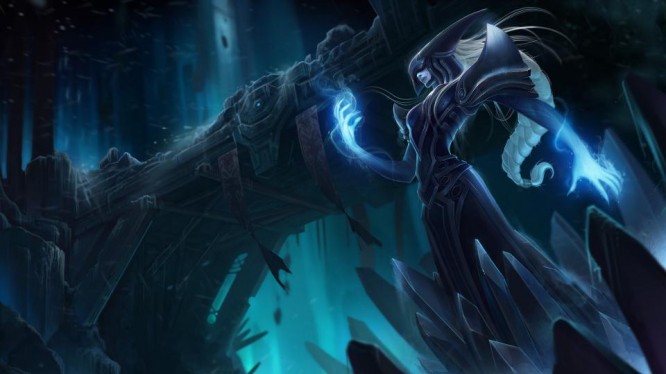
League of Legends offers a massive variety of champions, each with their own unique background story.
While Heroes of the Storm is technically still in its beta stage, it’s unlikely that it will ever reach as many character options as League of Legends based on their current release table, which is generally one hero per month, and possible lore restrictions. With only 34 heroes currently available the character pool is incredibly shallow right now and only about half of those are seen as viable in competitive play.
That being said, there is definitely something nostalgic about playing your favorite characters from past Blizzard titles such as Kerrigan and Arthas; however, only being able to pull from previously existing characters limits options for creativity and unique skillsets. Additionally, very few of the heroes can have a team built around them due to fairly generic skillsets and limited character options. Two exceptions to this rule are Sergeant Hammer and Illidan due to Hammer’s long-range siege ability and Illidan’s lack of mana paired with short cooldowns, which allows him to create intense pressure on the enemy team if properly protected. Nevertheless, Valla can still be substituted with Tychus or Falstad and Diablo’s role can be filled by Arthas, Muradin or E.T.C.
League of Legend’s bread and butter is Summoner’s Rift. It’s a typical three lane MOBA map with two turrets in each lane, a jungle, and two bosses that can be contested in the middle of the map. Any team looking to be truly competitive will have to learn this map and every little nuance that it contains. There’s nothing wrong with Summoner’s Rift, but it can also become a bit stale after a thousand playthroughs or so. Now League of Legends does technically have three other maps, but they’re definitely overshadowed.
The Twisted Treeline is a 3vs3 map with two lanes and does see some competitive play, but that’s usually the exception and not the rule. The Howling Abyss is a very casual, fan-inspired map that pits two teams of five players against each other in a single lane without any form of healing, besides potions and abilities. Finally, The Crystal Scar features the Dominion game mode, which is probably the least favorite game mode for most players and consists of five capture points on a circular map. These additional maps do provide some relief from the competitive stress of Summoner’s Rift, but they are usually just for fun modes and don’t add a ton of value to the core audience or viewers.
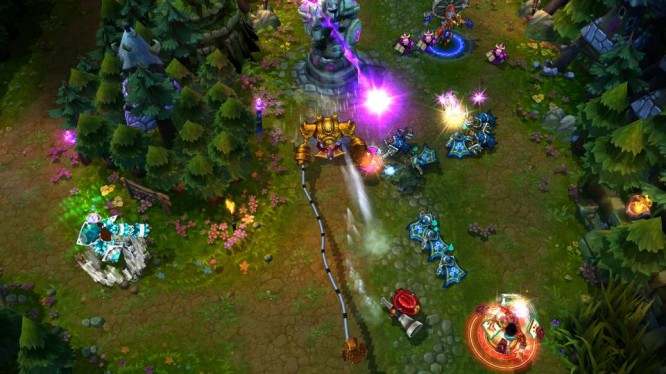
Summoner’s Rift has become the standard of MOBA battlegrounds, but it can’t compete with the variety that HOTS offers.
This is the category where Heroes of the Storm comes out strong. There are currently six maps on rotation and all of them have an equal chance at competitive play. Currently maps are chosen by the team captains who take turns banning the ones they don’t want so there are some favorites like Dragon Shire, Haunted Mines and Cursed Hollow. In Quick Match and Hero League play the map is entirely random, which requires players to learn the ins and outs of every single map. This honestly wouldn’t be anything special if every map was essentially the MOBA standard with a few variations here and there, but each battleground is entirely different.
Every battleground features periodic events that appear around the map and force each team to either contest or attack a different objective. This creates a lot of counter play and makes every match different from the previous even if it’s the same two teams. On Haunted Mines teams can choose to fight over skulls to empower their giant NPC golem or they can rush mercenary camps or base objectives. Each strategy can lead to a very different outcome and there’s a lot of risk versus reward gameplay involved.
Where time has given League of Legends the advantage in quantity and complexity of character designs, it hasn’t necessarily been kind to it in the aesthetics department. That being said, League of Legends wasn’t that amazing to look at when first released and wasn’t going to win any awards for visual appeal back in 2009. It has received various visual improvements over the years to both the battlegrounds and character models, but some are obviously still lacking. While it’s not painful to look at anymore it is specifically built with lower textures to allow it to run on a wide variety of computers, which increases the scope of its audience.
That might be convenient for players on a budget, but it’s not enough the visual elitists who want everything in beautifully rendered 3D while running on Ultra settings. That visual experience has generally not been found MOBA world as previous titles have focused almost solely on gameplay while letting the graphical elements slide a bit. Even the relatively newer Dota 2 doesn’t appeal to everyone’s tastes with its artistic choices. That being said, Heroes of the Storm is absolutely gorgeous with its 3D environments and incredibly detailed character textures. Furthermore, the game was developed using the StarCraft II engine, which means that all of this was accomplished using a 5-year-old engine.
It’s generally uncontested that League of Legends has one of the biggest followings in all of the competitive gaming world. From the League Championship Series to the yearly World Championship there are pro teams fighting tooth and nail to get a piece of the action. Not only are the multimillion-dollar prize pools enticing, but there’s always the chance at sponsorship and being paid to play full-time. Besides the big tournaments there are thousands of smaller amateur and in-house tournaments being sponsored by communities and organizations. Breaking into the competitive scene at this stage in the game is almost impossible, however, due to the sheer amount of high-level players and teams that already exist. According to Riot, they had more than 27 million players log in each day, in 2014; that’s a lot of competition.
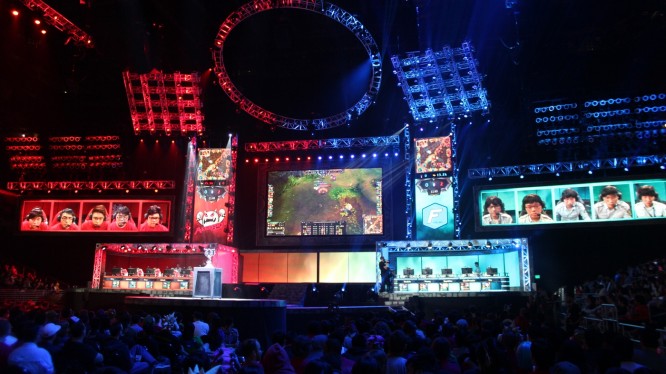
It’s hard to argue with the dedication of League of Legends fans.
In contrast, the Heroes of the Storm competitive scene is just starting to get warmed up. In North America there are only a handful of professional teams and a couple of dozen amateur ones. The rest of the world has been more involved in competitive Heroes of the Storm, but the number of teams is still miniscule in contrast to the big titles such as Dota 2 or League of Legends. There are a number of small tournaments being hosted weekly including the HeroesHype Amateur Cup on Wednesdays and Kings of the Storm every Saturday, but there is definitely still room for the game to grow. Once the game exits closed beta and there’s a large influx of players it’s likely that there will be significantly more competition, but currently it’s a little lacking.
This is one category that comes down to personal preference more than anything else. Both games deliver their individual experiences in a well-put-together manner. What League of Legends provides is an extremely polished take on the typical MOBA, but it doesn’t necessarily create anything outside the box. The game has been around for more than five years and has stuck to its core mechanics, for the most part, that entire time. Unfortunately, the standard MOBA formula is starting to feel a bit bland. League of Legends wasn’t particularly unique when it launched, but it was the first standalone MOBA, which is one of the main factors that drove its success.
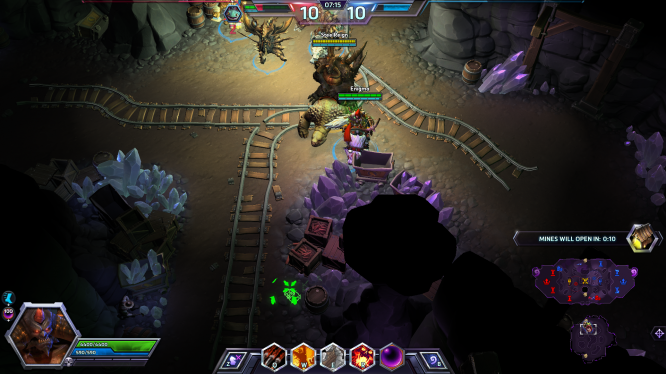
Gathering skulls in the Haunted Mines forces team fights more often than not.
Having played League of Legends for four years, one of the problems with the game is that it’s focused too much on individual laning and not enough on team play until late game. If one player performs poor early on it can literally give the enemy team an advantage that can’t be overcome. The opposite is also true, and if one player performs their role well enough it’s possible to carry a team of weaker players. MOBAs are supposed to be team-based games, but if the match is essentially determined before the first team fight then it kind of loses that purpose. This leads me to another issue with League of Legends, and most other MOBAs as well; there’s too much emphasis on farming. Spending the first 15 minutes of every game trading creep kills with your opponent is not the most exciting thing in the world. At high levels of play there are relatively few kills on either side of a match and good players can almost always avoid a gank from the jungle. This leads to a mobile battle arena with few actual team battles.
That isn’t to say that there aren’t issues with Heroes of the Storm either. The lack of items can be a turn off for the typical player and cookie-cutter builds, as well as team compositions, are definitely an area of concern. However, Heroes of the Storm does what no other MOBA has really gotten a grasp on yet. It focuses on dynamic, team-centric PvP. Removing items takes the focus away from farming and gives purpose to every objective on the map. Neutral creeps aren’t killed for gold, but instead they provide a positional advantage by pushing the lane. Some events, such as Cursed Hollow tribute spawns, are completely random and call for adaptive gameplay. Others, including Dragon Shire and Haunted Mines, have timers that fluctuate with the pace of the game and have stronger spawns as the game goes on.
There’s also the option to avoid these objectives and soak lane experience or push down forts, but sooner or later a team fight is going to be forced. Furthermore, bypassing objectives in Heroes of the Storm is much more painful than in any other MOBA. Ignoring the top turrets in League of Legends isn’t going to influence the pace of the game all that much, but giving your enemy a garden terror could cost the game. The importance of these objectives puts teams in a position where they either have to fight or suffer grave consequences; this leads to more team engagements than most typical MOBAs. This emphasis on team battles and important objectives is something that has been missing from the genre and is what separates Heroes of the Storm from the pack.
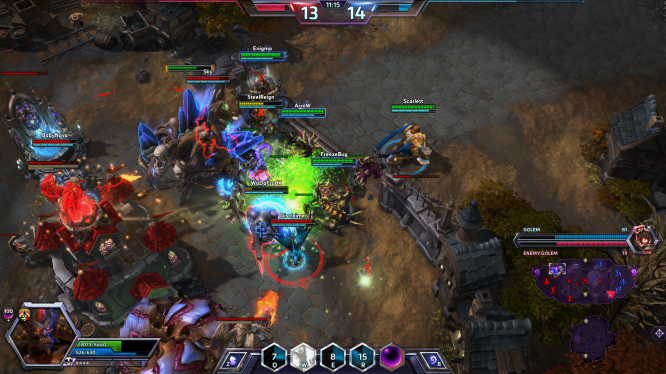
On the other hand, ignoring the skulls can lead to a punishing enemy push.
Both League of Legends and Heroes of the Storm are exceptional games that add a lot of value to the MOBA genre. Nevertheless, Heroes of the Storm brings something new to the table that hasn’t successfully been implemented by any other game. There are dozens of DOTA/League of Legends clones out there, but Heroes of the Storm is something new and refreshing. By focusing on PvP, dynamic events, varied battleground scenarios, and wrapping it all in an aesthetically pleasing package, Blizzard has likely created the next evolution of the MOBA genre.

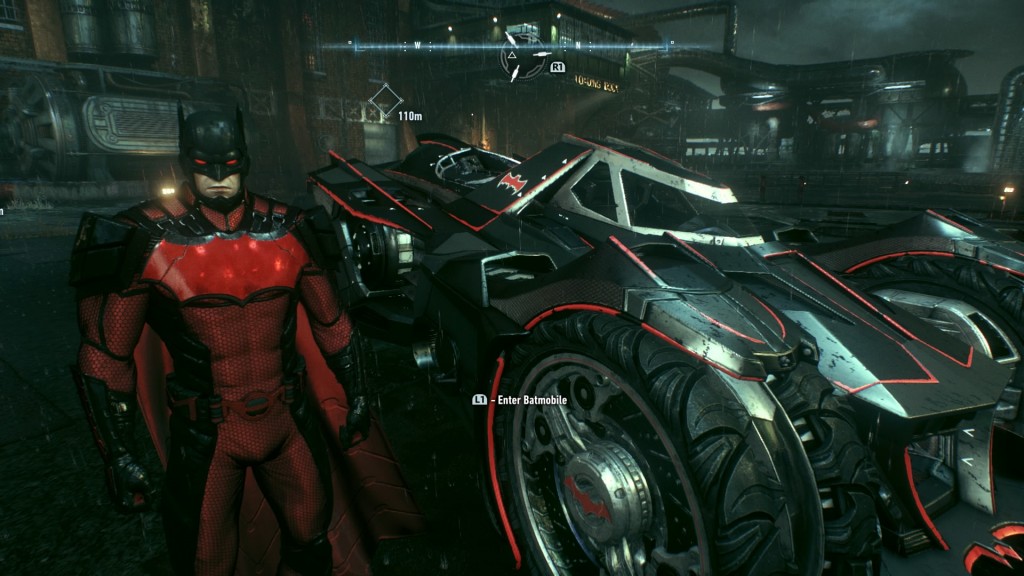

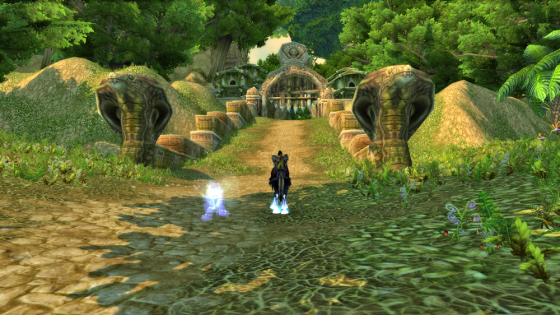
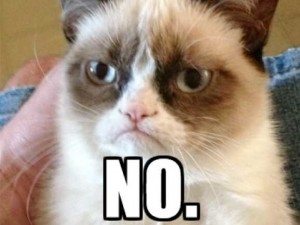 WoW Wednesday : Communication Breakdown .
WoW Wednesday : Communication Breakdown .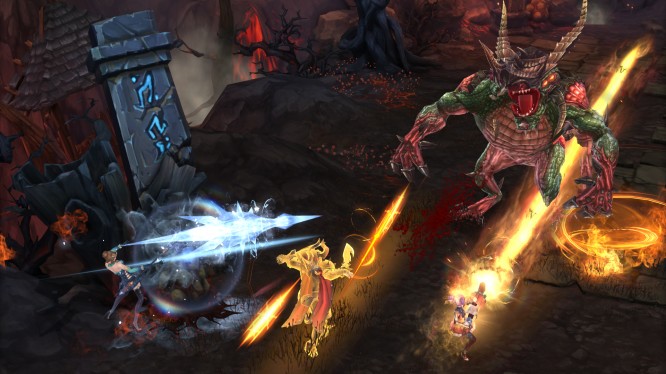 PAX Prime 2015: Hands-on with Devilian .
PAX Prime 2015: Hands-on with Devilian .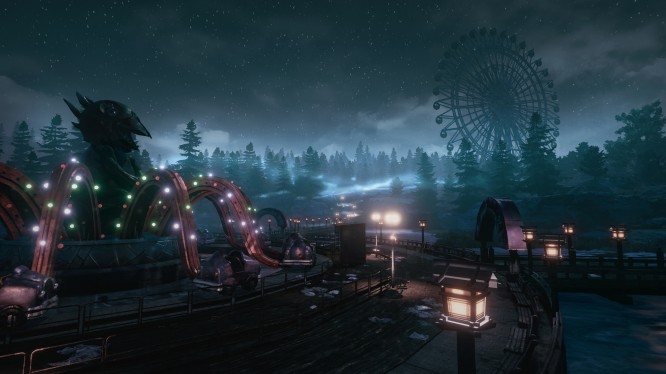 A Walk in The Park with Joel Bylos .
A Walk in The Park with Joel Bylos .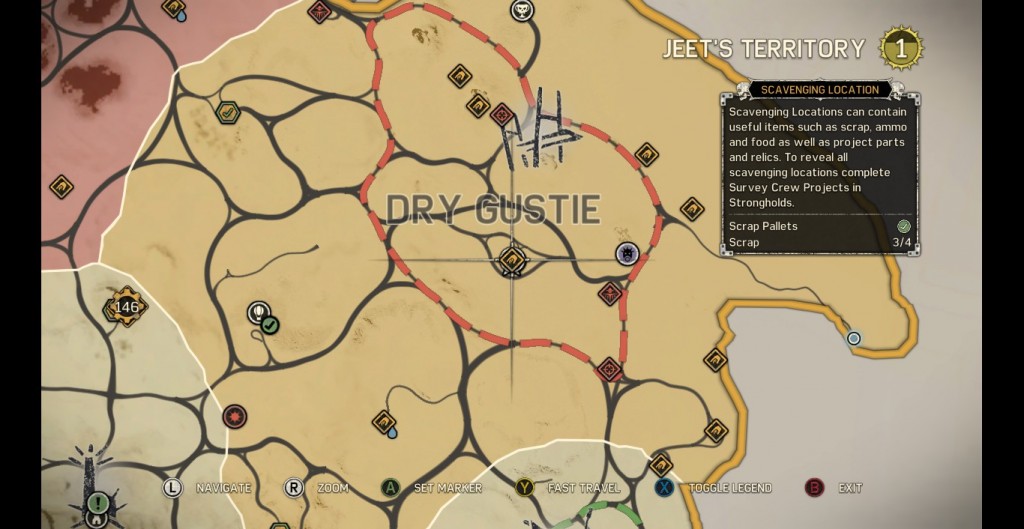 Mad Max Guide: How To Get Golden Tuska Rare Car, Location And Map
Mad Max Guide: How To Get Golden Tuska Rare Car, Location And Map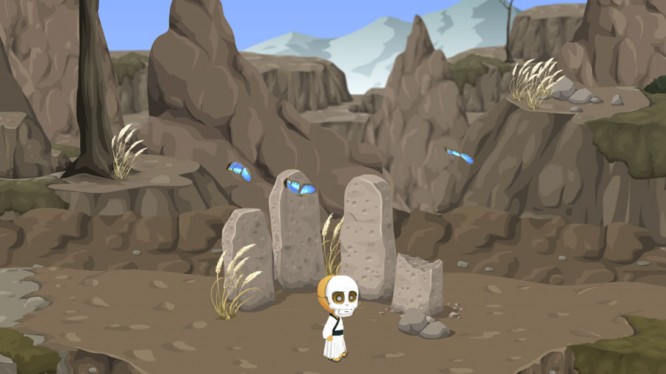 Glitch Revival Project - An Interview with the Project Lead of Eleven .
Glitch Revival Project - An Interview with the Project Lead of Eleven .